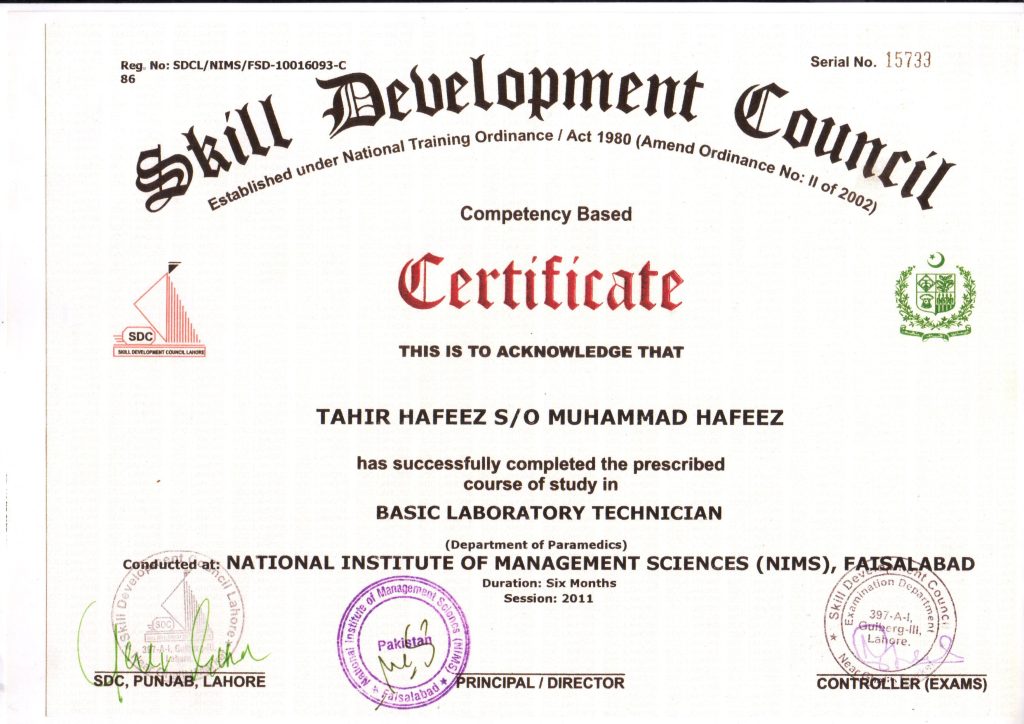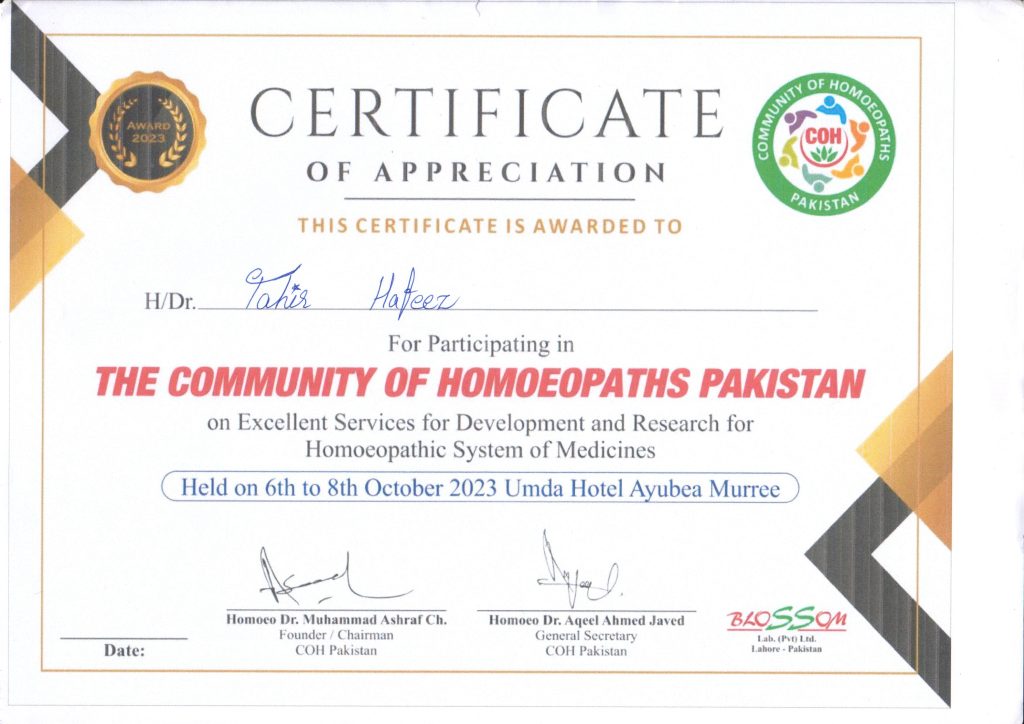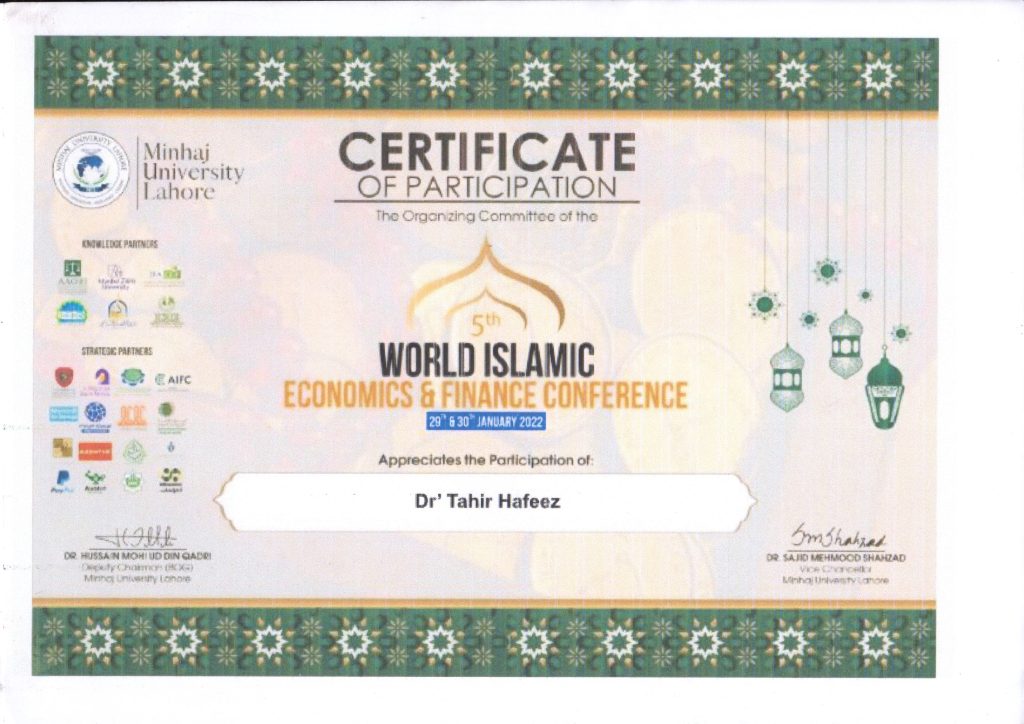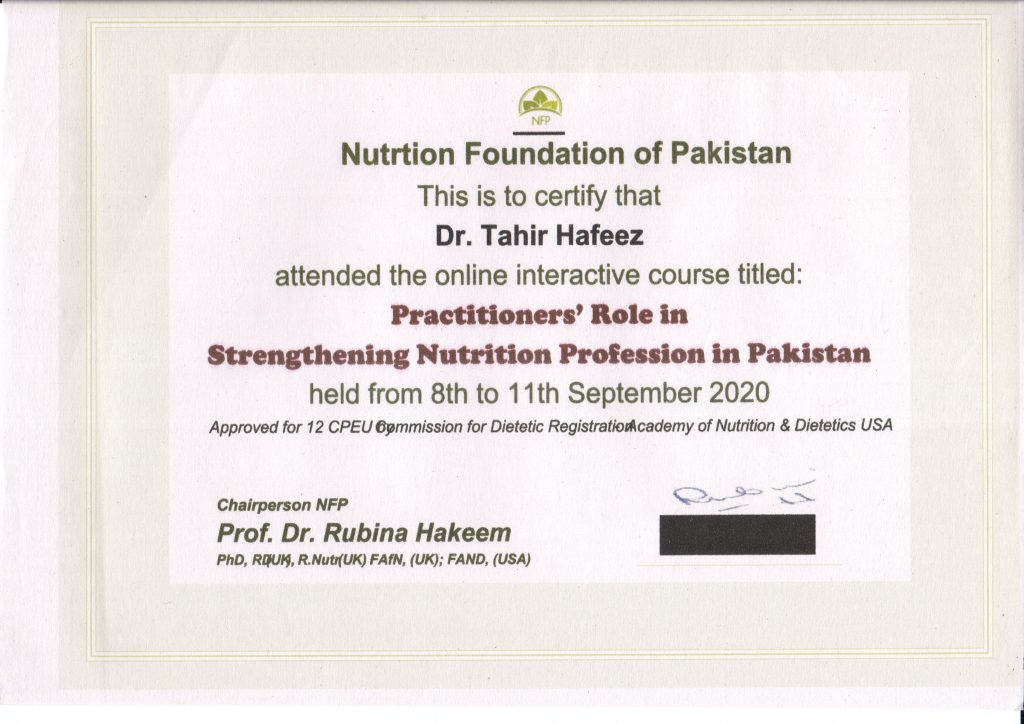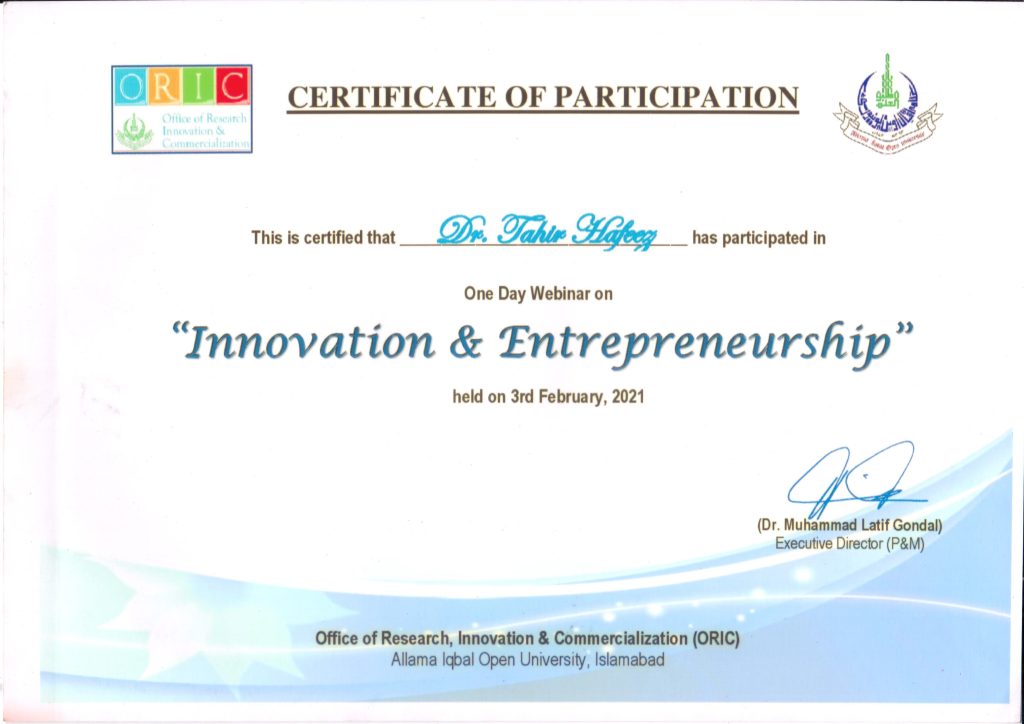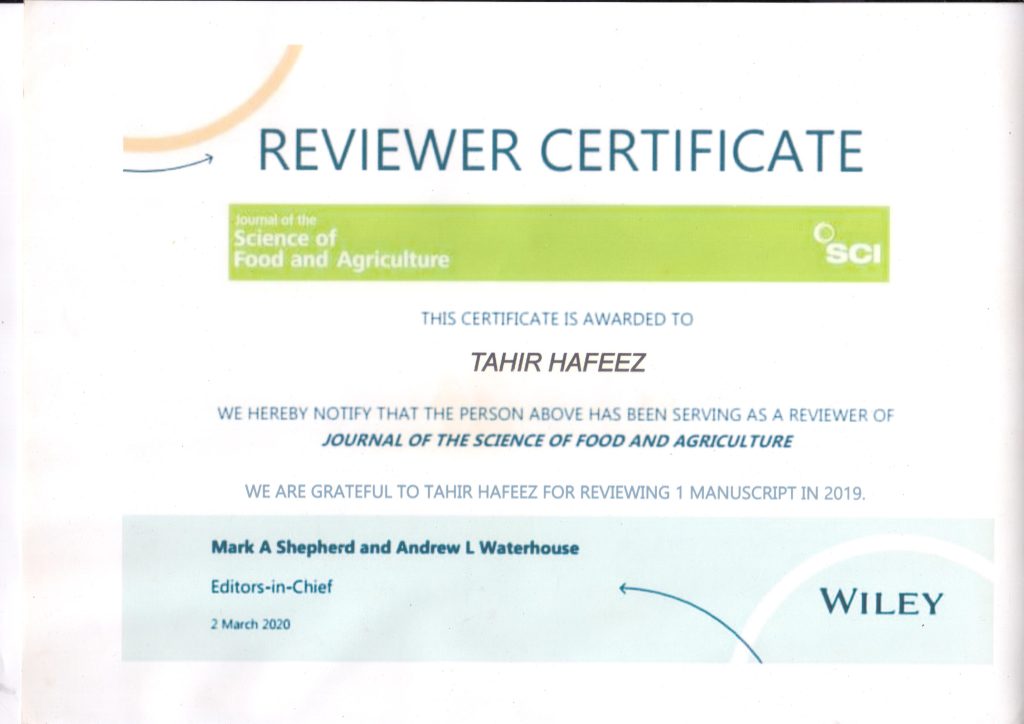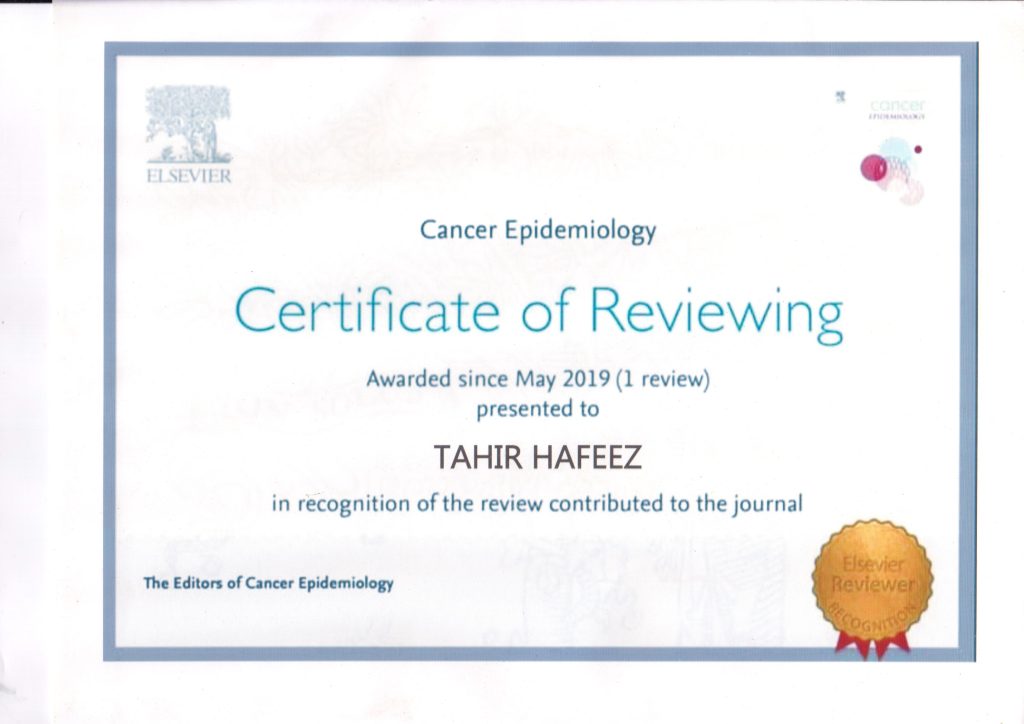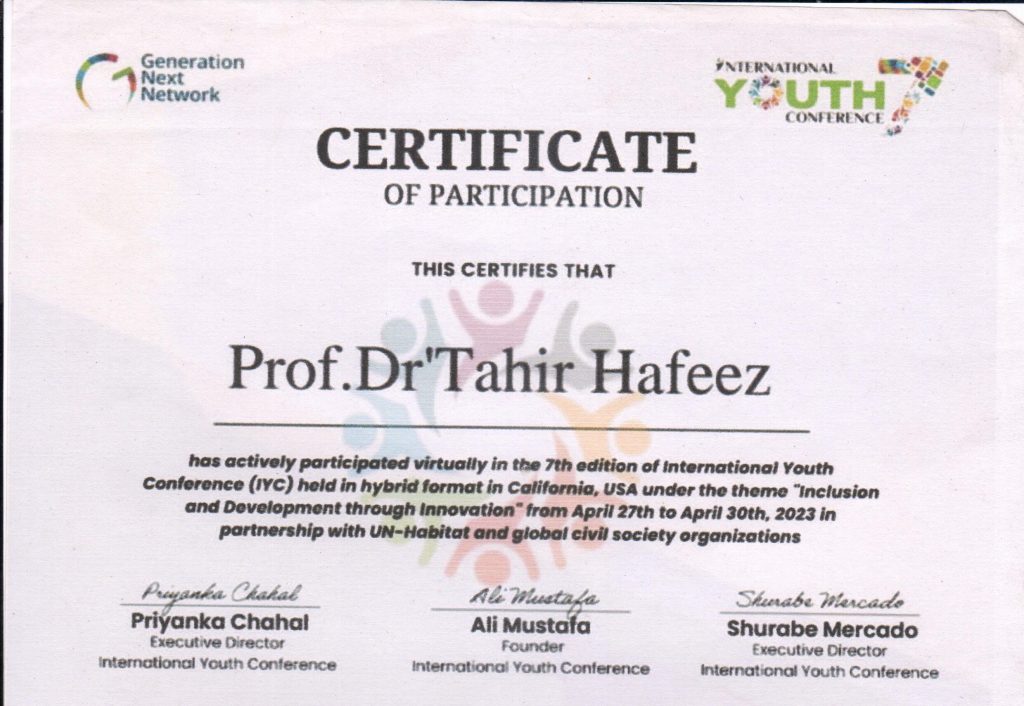Meet our expert Dietition!

About the Expert
Meet [Dr. TAHIR HAFEEZ]
Prof.Dr.Tahir Hafeez ( Gold Medalist)
(RD.MD.Ph.D)
is a Holistic Practitioner and well-being coach at the Tahir Holistic Healing Clinic & Research Institute , with certifications in Holistic Health Counselling, Gut Health, Genetic Disorder Treatment,Hormone Health, and the Psychology of Food. Since starting his practice in 2003, he has focused on uncovering the root causes of poor health while helping clients achieve weight loss goals. His approach towards functional nutrition provides practical knowledge to improve health, tailored to the demands of modern urban life.As a Wellness Coach, Holistic Healing Practitioner, and Clinical Psychologist, [Dr. Tahir Hafeez] has dedicated years to helping individuals transform their lives. A gold medalist in M.Phil. and BHMS, their expertise spans fertility, mental health, and alternative therapies, working in esteemed roles across multiple locations in Pakistan.
Book an appointment here!
What is shilajit ?
Shilajit, also known as Asphaltum, Black Bitumen, Silaras, salajit, and shilajatu, is a blackish-brown powder or an exudate from high mountain rocks especially in the Himalayas. Shilajit, sometimes mentioned as a mineral tar or resin, is a highly viscous substance readily soluble in water. Though it is now obtained from many other countries, Shilajit was traditionally sourced in India and Tibet. The health benefits of shilajit differ from region to region, depending on the place from which it is extracted. Shilajit contains fulvic acid, humic acid, 3-hydroxydibenzo-α-pyrone, hippuric acid along with a high phenolic residue that has great potential uses in certain diseases due to its various properties, including antioxidant, anti-inflammatory, anti-ulcerogenic, anti-fungal, anti-diabetic, anxiolytic, antiallergic, analgesic, cognitive memory enhancer, and immunomodulatory properties.
Shilajit also possesses the ability to interact positively with other drugs and acts as a neuroprotective agent against cognitive disorders. Based on this literature, the current research was undertaken to synthesize shilajit-based ZnO nanoparticles and screened their effect on cervical cancer cell lines. To the best of our knowledge, a biological approach using shilajit extract has been used for the first time as a reducing material as well as a surface stabilizing agent for the synthesis of spherical-shaped ZnO-NPs.
Shilajit is a phyto-mineral diffusion and semi-solid matter used as traditional medicine with extraordinary health benefits. This study provides a comprehensive data on Shilajit with emphasis on heavy metal profile, associated toxicities, and metal detoxification mechanisms by humic substances present in Shilajit.
Findings showed that Shilajit is distributed in almost 20 regions of the world with uses against 20 health problems as traditional medicine. With various humic substances, almost 11 biological activities were reported in Shilajit. This phyto-mineral diffusion possesses around 65 heavy metals including the toxic heavy metals like Cu, Al, Pb, As, Cd, and Hg.
However, humic substances in Shilajit actively detoxify around 12 heavy metals. The recommended levels of heavy metals by WHO and FDA in herbal drugs is 0.20 and 0.30 ppm for Cd, 1 ppm for Hg, 10.00 ppm for As and Pb, 20 ppm for Cu, and 50 ppm for Zn. The levels of reported metals in Shilajit were found to be lower than the permissible limits set by WHO and FDA, except in few studies where exceeded levels were reported. Shilajit consumption without knowing permissible levels of metals is not safe and could pose serious health problems. Although the humic substances and few metals in Shilajit are beneficial in terms of chelating toxic heavy metals, the data on metal detoxification still needs to be clarified.
Particals Of Shilajit ?
The data obtained from the particle size analyzer provided clear evidence that ZnO nanoparticles synthesized using shilajit extract were smaller. The average size of the nanoparticles obtained with shilajit extract was measured to be 348 nm and the polydispersity index was found to be 0.322 . These results indicated that the shilajit extract yielded ZnO nanoparticles with a smaller overall size.
Unlike other synthetic methods, the biosynthetic route eliminates the use of toxic chemicals, high energy requirements, and the need for elevated pressures and temperatures. The biological resources employed in this eco-friendly approach include plant extracts, bacteria, fungi, cyanobacteria, diatoms, seaweed, and enzymes for the synthesis of metal nanoparticles. Green synthesis techniques leverage natural agents such as plant extracts, sugars, vitamins, biodegradable polymers, and microbes, which act as both reductants and capping agents. Moreover, this approach minimizes the use of inorganic materials and primarily utilizes metal nanoparticles (NPs), metal oxides, and salts for nanoparticle fabrication.
Green synthesis offers several advantages over alternative synthetic methods, including simplicity, cost-effectiveness, reproducibility, and relatively higher stability. Extensive research has been conducted on the use of naturally available resources to synthesize various metal nanoparticles, such as gold, silver, zinc, copper, titanium oxide, platinum, magnetite, and nickel. The different parts of the plant are used in Indian traditional medicine for the treatment of painful muscular spasm, dysentery, fever, rheumatism, asthma and as an expectorant and purgative. The starting materials of the metal nanomaterials are divalent and trivalent metal ions. There are different methods for the preparation of metal nanoparticles like chemical or photochemical methods. By using reducing agents, the metal ions are reduced to the metal nanoparticles.
These have a high surface area and have the good adsorption ability of small molecules. They are widely used in different research areas, environmental and bioimaging studies. Not only a single nanoparticle but also the mixing of two or more nanoparticles with the size control can also be achieved. The plant extracts act as reducing and stabilizing agents for biosynthesis. Bio-reduction involves reducing metal ions or metal oxides to zero valence metal NPs with the help of phytochemicals like tannins, polysaccharides, polyphenolic compounds, vitamins and amino acids. Among different nanomaterials, no nanoparticles are considered to be safe both in vitro as well as in vivo. Due to its highly biocompatible and biodegradable nature, zinc oxide (ZnO) nanoparticles can be selected as potent nano-platforms for cancer treatment. The use of ZnO nanoparticles in cancer treatment has grabbed the interest of researchers and currently, a lot of studies have been published demonstrating the anti-cancerous activity of ZnO nanoparticles.
Uses of Shilajit on Humans ?
Therapeutic properties
According to traditional Indian knowledge, shilajit exerts action as a tonic, laxative, expectorant, diuretic, anti-bilious, immuno-modulator, lithotriptic and anti-hypertensive when given internally and it acts as antiseptic, analgesic, deobstruent and germicide when applied externally. Shilajit is given along with milk to control diabetes, and to treat fractures shilajit is prescribed along with Commiphora wightii (Arn.) Bhand. (guggulu). It is believed that it promotes the formation of
Antioxidant activity :
Preclinical studies in adult male Wistar rats revealed that processed shilajit provides complete protection to methyl methacrylate against hydroxyl radical-induced polymerization. Shilajit in the dose of 20 and 50 mg/kg/day, i.p., for 21 days induced a dose related increase in superoxide dismutase (SOD), catalase (CAT) and glutathione peroxidase (GPX) activities in frontal cortex and striatum of rats when compared with the control.
Immuno-modulatory activity :
Pure shilajit was found to supplement the lytic potential of activated lymphocytes and produced T-cell mediated cytotoxicity. This was evident from the ability of the shilajit – treated lymphocytes to lyse 51Cr labelled tumour cells. Both fulvic acids (FAs), containing minor amounts of dibenzo-α pyrones (DBPs) and 3,8-dihydroxydibenzo-α pyrones in doses of 400 μg/mouse i.p, inhibited the proliferation of Ehrlich ascites tumour cells without significantly affecting the number of dead cells.
Physical Health Benefits :
- Energy and Endurance:
Salajeet is rich in fulvic acid, which helps increase energy levels and enhance endurance.
- Anti-Aging:
Salajeet’s antioxidant properties help reduce oxidative stress, promoting healthy aging.
- Immune System:
Salajeet is believed to boost the immune system, helping the body fight off infections.
- Inflammation Reduction:
Salajeet’s anti-inflammatory properties may help reduce inflammation and alleviate conditions like arthritis.
Mental Health Benefits :
- Stress Relief:
Salajeet is believed to help reduce stress and anxiety levels.
- Cognitive Function:
Salajeet may improve cognitive function, including memory, attention, and concentration.
- Mood Enhancement:
Salajeet’s adaptogenic properties may help regulate mood and reduce symptoms of depression.
Reproductive Health Benefits :
- Male Fertility:
Salajeet is believed to improve male fertility by increasing sperm count and motility.
- Female Hormone Balance:
Salajeet may help regulate female hormone balance, alleviating symptoms of menopause and PMS.
Other Benefits :
- Detoxification: Salajeet may help remove toxins from the body, promoting overall health.
- Skin and Hair Health: Salajeet’s antioxidant properties may help improve skin and hair health.
- Digestive Health: Salajeet may help regulate digestive function and alleviate symptoms of IBS.
Salajeet, also known as Shilajit, can be used in various ways to reap its potential health benefits. Here are some common methods:
Internal Consumption :
- Powder form: Mix 1/2 to 1 teaspoon of Salajeet powder with warm water or milk, 1-2 times a day.
- Capsules: Take 1-2 capsules, 1-2 times a day, with warm water or milk.
- Resin form: Mix a small pea-sized amount of Salajeet resin with warm water or milk, 1-2 times a day.
External Application :
- Topical application: Apply a small amount of Salajeet resin or oil to the affected area, 1-2 times a day.
- Massage oil: Mix Salajeet oil with a carrier oil (e.g., coconut or olive oil) for a relaxing massage.
Remember to consult with a healthcare professional before using Salajeet, especially if you have any underlying medical conditions or take medications.
Side effects of Shilajit ?
- Consult a healthcare professional:
Before using Salajeet, especially if you have any underlying medical conditions or take medications.
- Start with a small dose:
Gradually increase the dose as needed and under medical supervision.
- Ensure quality and purity:
Purchase Salajeet from a reputable source to ensure quality and purity.
- Avoid during pregnancy and breastfeeding:
As a precautionary measure, consult a healthcare professional before using Salajeet during pregnancy or breastfeeding.
Remember, Salajeet is not a substitute for medical treatment. If you have any health concerns, consult a healthcare professional for personalized advice.



